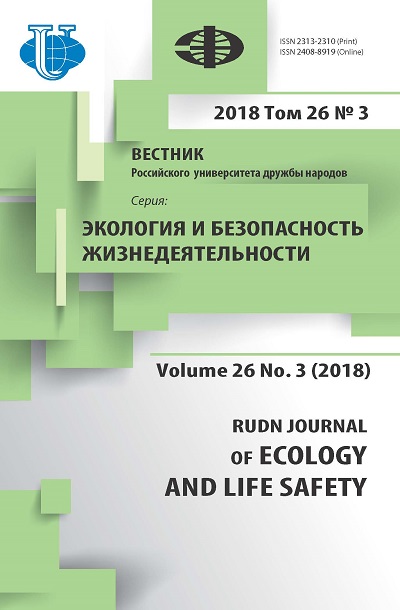Geoecological aspects of civil engineering on the sands
- Authors: Averkina T.I.1
-
Affiliations:
- Lomonosov Moscow State University
- Issue: Vol 26, No 3 (2018)
- Pages: 346-353
- Section: Geoecology
- URL: https://journals.rudn.ru/ecology/article/view/20879
- DOI: https://doi.org/10.22363/2313-2310-2018-26-3-346-353
Cite item
Full Text
Abstract
Civil structures are often built on sands, which are widespread in the upper part of the geological section. These soils usually serve as a reliable basis for engineering structures, but under certain conditions can cause large complications and even endanger the life safety. Analysis and generalization of the construction experience allows us educe three groups of problems that need to be identified and addressed timely. Most of the problems are related to water-bearing sands. Water flows, breakthrough of pressure water and quicksand are very common phenomena that complicate the excavation of construction pits and the device of underground structures. To protect against groundwater is often used dewatering, which can disrupt the stability of the surrounding buildings in high-density urban development. The second group of problems is related to the process of suffusion. The most dangerous of its manifestations are suffusion failures, leading to emergency situations and sometimes to the destruction of structures. The third group of problems is caused by specific reaction of sands to dynamic impacts, in particular, by liquefaction of water-saturated sandy soils. The consequences of such a reaction can be very serious: the immersion of the structure in the ground, the uplift of piles or bridge supports, the float up of underground tanks, the uplift of liquefied soils from under the foundation until the formation of a building tilt or overturning of the structure.
About the authors
Tatyana Ivanovna Averkina
Lomonosov Moscow State University
Author for correspondence.
Email: averkinati@yandex.ru
Candidate of Geological and Mineralogical Sciences, Associate Professor, Department of Engineering and Environmental Geology, Lomonosov Moscow State University
1 Leninskie Gory, Moscow, 119991, Russian FederationReferences
- Voznesensky EA, Kovalenko VG, Kushnareva ES, Funikova VV. Soil liquefaction under cyclic loads. Moscow: Publishing house of Moscow State University; 2005.
- Engineering Geology of the USSR. Platform regions of the European part of the USSR. Book 2. Moscow: Nedra Publ.; 1991.
- Podborskaya VO. On the causes of deformation of architectural monuments and buildings of historical development of the territory of the V.I. Lenin state library of the USSR. Engineering Geology. 1988: 46—52.
- Ulitsky VM, Shashkin AG. Geotechnical support of urban reconstruction. Moscow: АСВ Publ.; 1999.
- Ulitsky VM, Shashkin AG, Shashkin KG. Geotechnical support of urban development. Saint Petersburg: StroyIzdat North-West Publ.; 2010.
- Ukhov SB, Semenov VV, Znamensky VV, Ter-Martirosyan ZG, Chernyshev SN. Soil mechanics and foundation engineering. Moscow: Vysshaya shkola Publ.; 2007.
- Khomenko VP, Kalashnikov MA, Potapov IA. Karst and suffusion holes in Moscow: features of engineering-geological surveys and forecasting. Vestnik MGSU. 2010;(4): 158—162.
















